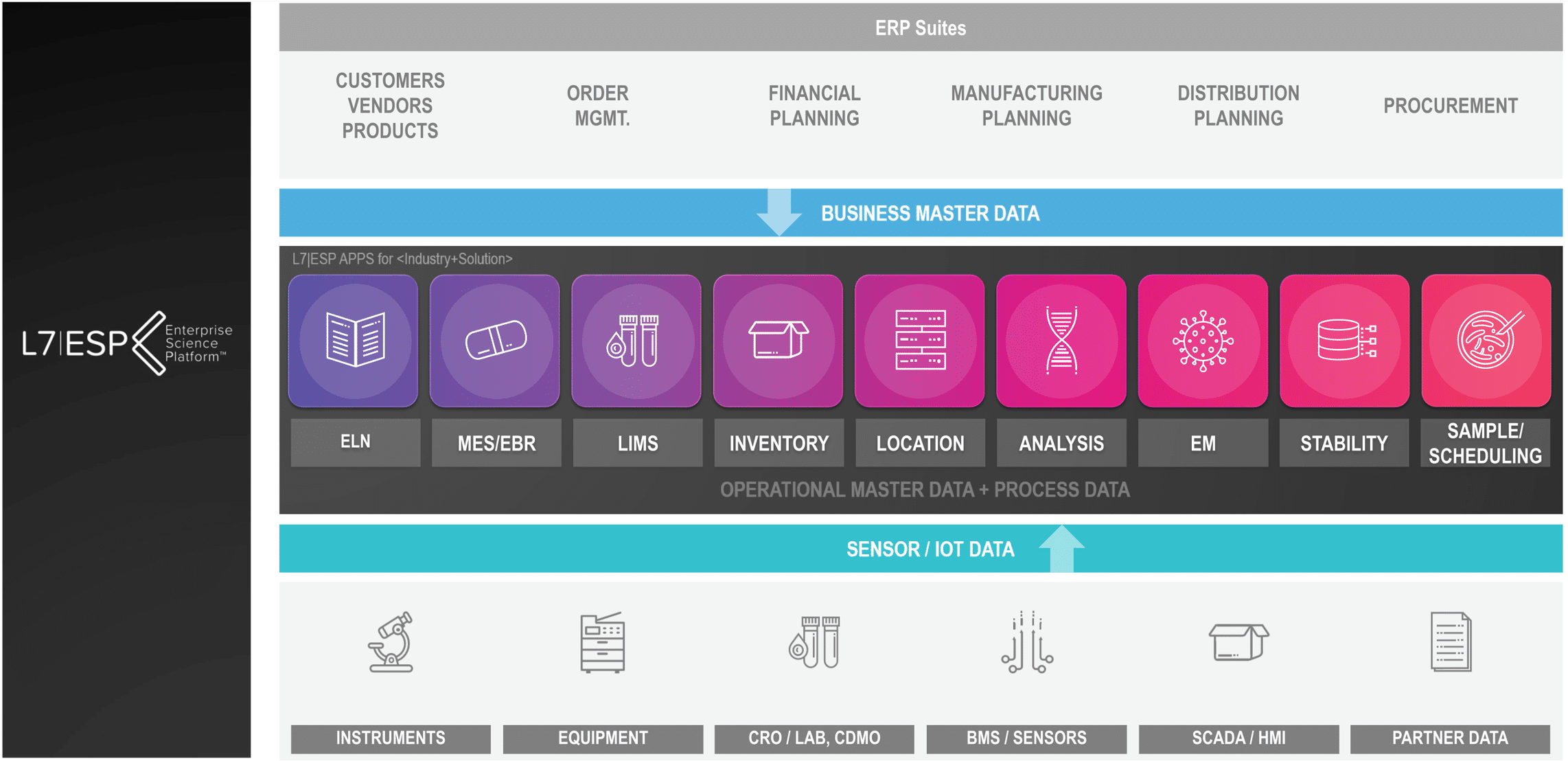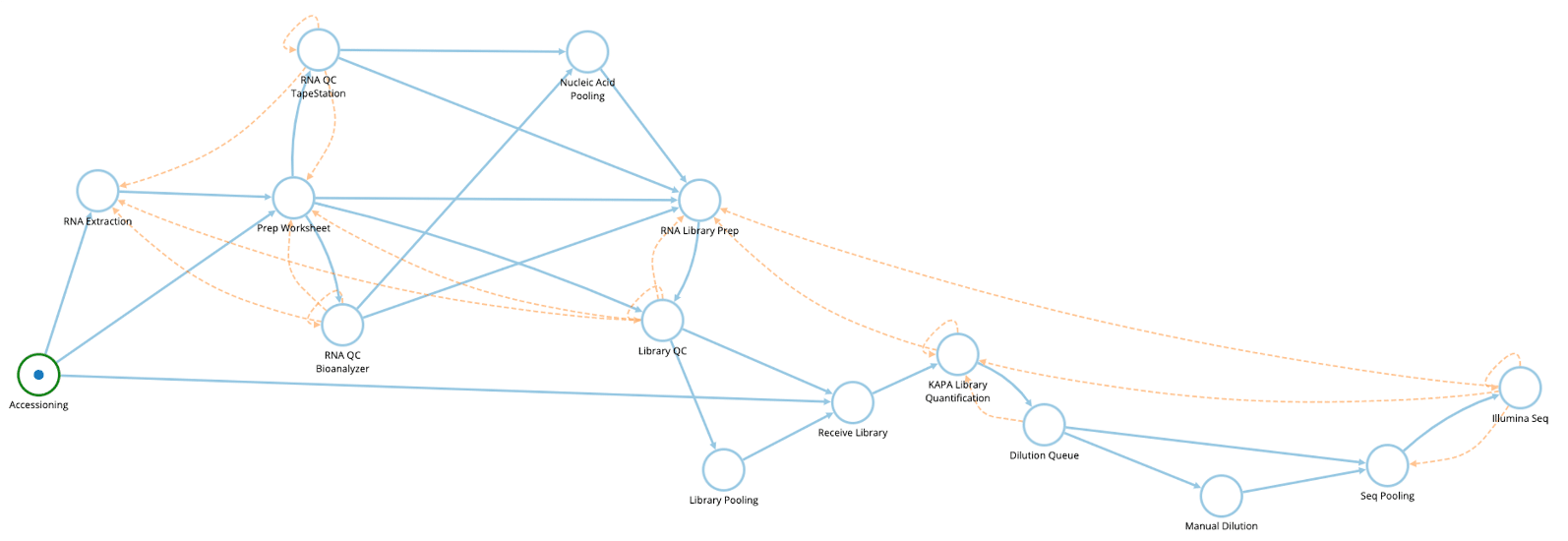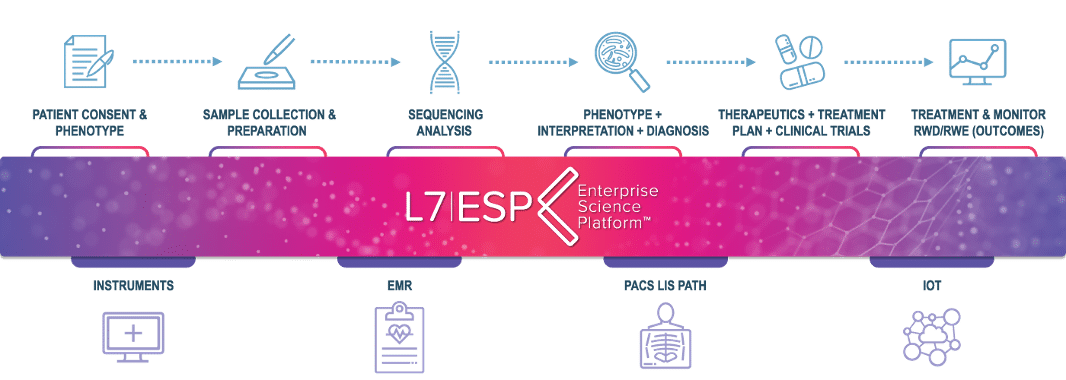L7 | CHATS
thought leadership
Challenges and Breakthroughs in Unified Digital Laboratory Systems in Diagnostics and Research Core Laboratories
by Caleb Davis | posted on April 11, 2024
INTRODUCTION
Recent advances in scientific procedures and best practices have been matched with a proliferation of specialized software solutions. This leads to most diagnostics and research labs using multiple software systems that each only track, manage, or process a subset of the lab’s overall operations – thus effectively siloing each team member, group, or process from the rest of the lab. These silos then result in decreased data flow through the lab, decreased visibility into sample and data status, and decreased sample processing throughput. Here we demonstrate breakthroughs in digitalizing laboratory processes in fully compliant systems from the point of sample collection through to data reporting. This leads to an increase in laboratory efficiency, increased data integrity, better decision-making due to better data visibility, and reduced costs for diagnostics laboratories and research cores. As a proof of principle, we highlight how two different academic research cores have implemented this new technology, L7|ESP, to reduce their laboratory silos. Laboratory 1 is a sequencing core at an academic institution and processes hundreds to thousands of samples per day. Utilization of L7|ESP provided them with the ability to send information and samples across various groups within their core and seamlessly output final reports to their customers. Laboratory 2 is a cutting-edge protein sciences group at a large nonprofit biomedical research institution. Their work utilizes multiple different instruments, sample types, and desired outputs and thus requires flexibility and adaptability without sacrificing throughput, data integrity, or user experience. Through modeling these processes in L7|ESP they are able to run specialized processes at scale while still running generalized processes to meet the changing needs of their clients. These case studies show that modern diagnostics and research core laboratories can leverage today’s latest breakthroughs in computer science and software to enable them to successfully scale and grow to tomorrow’s scientific needs.
METHOD – L7|ESP PLATFORM

Figure 1: L7|ESP encompasses multiple laboratory needs and seamlessly integrates with external instruments and systems.
L7|ESP is an advanced data intelligence platform for modern life science labs. As shown in Figure 1, L7|ESP contains multiple apps to meet the diverse needs of scientists. These diverse functionalities provide the backbone for most of a lab’s process and data needs. Each app has been designed, developed, and refined to maximize functionality for even the most discerning of users.
In addition to the L7 apps, scientists can model any scientific or even non-scientific process ranging from manufacturing of precision medicines to high-throughput genomic engineering assays in the L7|ESP platform.
RESULTS
Lab 1, a large academic genomics core lab, was using a self-developed LIMS system to manage NGS experiments from many different collaborators. This led to a lack of scalability and data transparency across teams. L7|ESP provides Lab 1 with a central, unified platform that can scale as throughput grows (Figure 2). This process allows for transfer of samples and data across teams with a full audit trail, and integration with diverse pieces of equipment.

Figure 2: Process diagram of ”Lab 1” — a core genomics lab of a large academic research institution.
For Laboratory 2, the workflow process outlined in Figure 3 was developed which provides end-to-end functionality for an academic core lab’s proteomics process needs and allows them to:
- Work with multiple customers who submit Service Requests via iLab
- Ingest and translate this Service Request into an actionable experiment plan
- Execute the necessary experiments while incorporating data from multiple instruments
- Analyze the data using multiple analysis pipelines
- Cohesively parse, combine, and visualize this data into a customer-facing report
- Communicate with the customer of the experiment status at each step along the way

Figure 3: Process diagram of ”Lab 2” — a core proteomics lab of a large nonprofit biomedical research institution.
CONCLUSION
The Lab of the Future must grow beyond the four walls of the lab to break down data silos, virtualize, and digitalize rapid scientific discoveries across departmental and organization walls to help lead to better outcomes, improved reproducibility, and an increased rate of scientific discovery.

By digitalizing, automating, and simplifying all laboratory processes on a single regulatory-compliant informatics platform with all the apps and instrument integrations, a unified platform for managing operational data and processes is created. L7 Informatics’ ESP is such a platform that can bring increased workflow efficiencies and throughput to support any research, industrial, or clinical lab.
This work was presented by Caleb Davis, Ph.D., in the poster exhibit at ASHG 2023.
